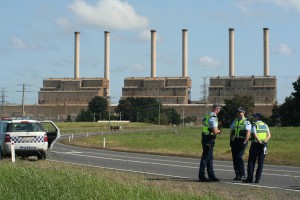Communications Minister Malcolm Turnbull has used a speech to the technology industry in Canberra to link the rapid rise of sensory and data enabled industrial and consumer products to better environmental and energy efficiency outcomes across the carbon-heavy transport and utilities sectors.
Speaking at the Australian Information Industry Association’s (AIIA) Internet of Things summit in Canberra on Thursday, the former technology entrepreneur said that anticipated machine-to-machine communications have, according to predictions, the capacity to push down greenhouse emissions by better controlling power end energy consumption and automating the shifting of consumption to lower demand periods to “deliver savings for consumers.”
A longstanding concept about as old as the internet itself, the rise of the Internet of Things is widely regarded as the next major industrial wave of technology that makes internet protocol connected machines intelligent enough to autonomously react to their environment or specific circumstances.
Mr Turnbull said IBM had calculated “that if the power grid in America alone were just five per cent more efficient, it would save greenhouse emissions equivalent to 53 million cars.”
The scenario is a challenge for state governments like New South Wales now attempting to sell the idea of privatising so called ‘poles and wires’ to the electorate on the basis the infrastructure is a lazy asset on the state’s balance sheet that could be better put to work elsewhere as cash.
However a major issue confronting energy producers and utilities is that new technology that not only minimises energy consumption but also has the capacity to generate and store it could be just around the corner.
While the metropolitan solar industry has to date largely been spurred on by rebates and subsidies for offsetting carbon heavy power by replacing it with solar, many regional and remote communities are actively pursuing systems that salt away power in battery blocks until it’s needed.
In the event that such systems become common in metro areas and linked to the Internet of Things, power needed from traditional generators (like coal) as well as the need and demand for capacity on distribution networks could fall dramatically and the value of those assets along with it.
If power is a potential loser, Australia’s far more scarce resource of water could be a big winner from the new technology.
“Utilities around the world have been estimated to lose between 25 per cent and 50 per cent of treated water to leaks. Again this something that can be detected and monitored through smart systems,” Mr Turnbull said.
“Australian water utilities currently spend $1.4 billion per annum on reactive repairs and maintenance, including the consequence cost of social and economic impact. Focusing the asset maintenance efforts on preventative rather than reactive repairs has the potential to save the water industry $355 million.”
But to make the Internet of Things a beneficial reality for Australia, Mr Turnbull said the government had to both chip in financially and get the rules governing it right.
“Obviously the Government has a role in promoting and investing directly in research and new uses for the Internet of Things,” Mr Turnbull said.
“But at a higher level, we also want to make sure we are setting the right regulatory environment for these technologies to flourish” he said adding that work was underway with the Australian Communications and Media Authority and the Communications Alliance “to ensure that we get the settings right.”
One asset that will become more lucrative as the sheer volume that needs to be transmitted is naturally finite radio spectrum, like mobile phone and radio channel frequencies, that will come under increasing pressure as demand for it rises.
A sharp increase in demand would be a financial bonanza for the government because it would get to auction off an prized asset with almost no sunk capital or infrastructure cost: clear airspace.
However a the potential for spectrum goldrush fuelled by telecommunications carriers already has emergency service providers, Defence and other spectrum users worried that a land grab could leave them short on signal.
A major issue for public safety agencies is that if they migrate onto commercial services like 4G operated by telecommunications carriers, vital communications could be lost or compromised in the event the network is saturated during a major incident.
A number of agencies especially, police and fire services, have lobbied for a separate closed digital network to be established to ensure critical connectivity.
“My Government yesterday announced a cost-benefit analysis will be conducted into public safety agencies’ use of publicly owned spectrum,” Turnbull said.
“The point is to find the most efficient means of creating radio communications networks for our safety agencies to use — whether it be bespoke networks or public-private partnerships — and whether the costs of allocating spectrum in a certain way outweighs its benefits.”
Mr Turnbull said a recent ACMA study found mobile broadband had contributed $33 billion “or more than 2 per cent of GDP” to the Australian economy in the seven years to 2013.
“In the Internet of Things environment, you would expect these benefits only to grow – and so too would the costs of inefficient policies.”






Leave a Reply